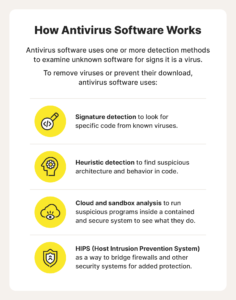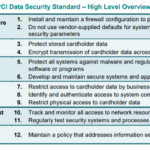Phishing attacks have become increasingly sophisticated, making it crucial for individuals and organizations to stay up-to-date on the latest trends in phishing protection. This article explores the ever-evolving landscape of phishing attacks and delves into how antivirus tools are adapting to counteract these threats. By understanding the shifts in cybercriminal tactics and the advancements in antivirus technology, you can better protect yourself and your sensitive information from falling into the wrong hands. So, let’s uncover the latest trends in phishing protection and discover the innovative ways antivirus tools are tackling this ongoing battle.
Understanding Phishing Scams
Phishing scams are a type of cyber attack where scammers use deceptive tactics to trick individuals into revealing sensitive information such as passwords, credit card numbers, or social security numbers. These scams typically occur through various mediums such as email, text messages, or social media platforms. The scammers often disguise themselves as trustworthy organizations or individuals to gain the victim’s trust.
How Phishing Scams Typically Occur
Phishing scams typically involve the scammer sending out fraudulent emails or messages that appear legitimate. These emails often contain links that direct the recipient to a fake website designed to look like the genuine one. The victim is then prompted to enter their personal information, which is then captured by the scammer.
Another common method is through social engineering, where scammers manipulate individuals into disclosing their sensitive information through personal interactions. This can involve pretending to be a trusted colleague, friend, or family member and using emotional manipulation to convince the victim to share their information.
Different Types of Phishing Scams
-
Spear Phishing: This type of phishing attack targets specific individuals or organizations, often using personalized and highly convincing messages. The scammers may gather information about their target through extensive research and use it to make their email or message appear more authentic.
-
Clone Phishing: In this type of attack, scammers create a replica of a legitimate email or website, making it nearly impossible to distinguish from the real one. The victim is then lured into opening the email, which prompts them to provide their sensitive information.
-
Whaling: Whaling attacks target high-level executives or individuals in powerful positions within an organization. Scammers craft tailored emails that appear to be from a trusted source, enticing the recipient to divulge confidential company information or perform fraudulent financial transactions.
Current Trends in Phishing Attacks
-
Emerging Strategies Used by Scammers: As technology advances, scammers are finding new ways to deceive their victims. They are employing sophisticated tactics, such as leveraging AI and machine learning algorithms, to craft convincing messages that are harder to identify as fraudulent.
-
Rise of Mobile Phishing Attacks: With the widespread use of smartphones, scammers are now targeting mobile users through phishing attacks. They send malicious links or fake apps through text messages or social media platforms, exploiting the vulnerabilities of mobile devices.
-
Targeted Phishing or ‘Spear Phishing’ Trends: Phishing attacks are becoming more targeted, focusing on specific groups or individuals. Scammers gather personal data from various sources to make their messages appear more credible and increase the chances of success.
-
Phishing via Social Media Platforms: Scammers are taking advantage of the popularity of social media platforms. They create fake profiles or pages that mimic legitimate businesses or individuals, tricking users into providing their personal information.
Latest Trends in Phishing Protection
-
Technological Advancements for Phishing Detection: Companies and individuals are investing in advanced tools and technologies to detect and prevent phishing attacks. These include email filtering systems, web filters, and anti-phishing solutions that analyze and block suspicious activities.
-
Using Artificial Intelligence and Machine Learning in Phishing Protection: AI and ML algorithms are being integrated into phishing protection systems. These technologies can analyze patterns, behavior, and content to identify potential phishing attacks and alert users or block them automatically.
-
Impact of Cloud-Based Security Solutions on Phishing Protection: Cloud-based security solutions provide real-time threat detection and protection. They analyze incoming emails and messages for malicious content, enabling organizations to quickly identify and prevent phishing attacks.
Evolution of Antivirus Tools to Counteract Phishing
-
How Antivirus Software Currently Detects and Prevents Phishing: Antivirus software uses signature-based detection and heuristic analysis to identify and block known phishing websites and malicious codes. They also utilize blacklists and reputation-based systems to warn users about potentially harmful websites.
-
Emerging Anti-Phishing Technologies in Antivirus Programs: Antivirus tools are incorporating more advanced anti-phishing technologies. These include website reputation analysis, real-time URL scanning, and sandboxing techniques that isolate suspicious files or links.
-
Incorporation of Predictive Algorithms in Antivirus Tools: Antivirus tools are now utilizing predictive algorithms to anticipate potential phishing attacks based on historical data and behavioral patterns. This enables proactive protection against new or previously unknown phishing scams.
Real-Time Phishing Detection
-
How Real-Time Detection Aids in Preventing Phishing Scams: Real-time phishing detection is crucial in preventing successful attacks. It allows for immediate identification and blocking of phishing attempts, minimizing the risk of sensitive information being compromised.
-
Software that Offers Real-Time Phishing Detection: Several software solutions provide real-time phishing detection. These tools continuously monitor incoming emails, messages, and web traffic, analyzing them for suspicious patterns or content.
-
The Role of Data Analytics in Real-Time Detection: Data analytics plays a significant role in real-time phishing detection. By analyzing large amounts of data, including user behavior, network traffic, and historical phishing attempts, patterns and anomalies can be identified, aiding in the timely detection of phishing attacks.
Email Filtering and Phishing Protection
-
A Look at How Email Filtering has Improved Phishing Protection: Email filtering has become more sophisticated, enabling better protection against phishing attempts. Advanced algorithms analyze incoming emails for suspicious links, attachments, or content, preventing malicious emails from reaching the recipient’s inbox.
-
Current Best Practices for Email Filtering: Best practices for email filtering include the use of SPF (Sender Policy Framework) and DKIM (DomainKeys Identified Mail) to authenticate email senders, as well as applying strict rules and filters to identify and block phishing attempts.
-
Future Trends in Email Filtering Technology: The future of email filtering technology lies in the integration of AI and ML algorithms. These technologies can further enhance phishing detection by analyzing email headers, content, and user behavior in real-time.
Importance of User Education in Preventing Phishing Attacks
-
How Phishing Awareness Can Prevent Scams: Educating users about the dangers of phishing and how to identify and report phishing attempts is essential. By raising awareness, individuals are more likely to be vigilant and cautious when encountering suspicious emails or messages.
-
Ways to Educate Users about Phishing Threats: Educational campaigns, training sessions, and informational materials can be employed to educate users about phishing threats. Providing examples, tips, and real-life scenarios can help individuals understand the techniques used by scammers and avoid falling victim to phishing attacks.
-
Implementing Phishing Simulations as a Learning Tool: Phishing simulations can be conducted to simulate real-life phishing scenarios. These simulations help users practice identifying phishing attempts and reinforce their understanding of the risks and best practices for protection.
Authenticating Emails to Protect from Phishing
-
Understanding What Email Authentication Is: Email authentication involves verifying the authenticity of an email sender and ensuring that the email has not been modified or tampered with during transmission. This helps prevent spoofing or impersonation attacks commonly used in phishing scams.
-
How Email Authentication Adds a Layer of Security: By implementing email authentication protocols such as SPF, DKIM, and DMARC (Domain-based Message Authentication, Reporting, and Conformance), organizations can increase the trustworthiness of their emails and reduce the chances of them being used for phishing purposes.
-
Emerging Trends in Email Authentication Technologies: New authentication technologies, such as BIMI (Brand Indicators for Message Identification), are emerging to provide enhanced email verification. These technologies aim to provide users with visual indicators of trusted emails, reducing the risk of falling for phishing attempts.
Incorporation of AI and ML in Antivirus Tools
-
Role of Artificial Intelligence and Machine Learning in Phishing Prevention: AI and ML are revolutionizing phishing prevention by improving detection accuracy and response time. These technologies can analyze vast amounts of data to identify patterns, anomalies, and indicators of phishing attacks.
-
How AI and ML Enhance the Capabilities of Antivirus Tools: AI and ML algorithms can augment antivirus tools by continuously learning and adapting to new phishing techniques. They can detect previously unseen patterns, predict emerging threats, and provide proactive protection to users.
-
Case Studies of Successful AI and ML Implementation in Antivirus Software: Several antivirus software solutions have successfully implemented AI and ML algorithms. These solutions have demonstrated improved accuracy in detecting and blocking phishing attacks, safeguarding users’ sensitive information.
Future Predictions and Protection Mechanisms
-
Likely Future Trends in Phishing Attacks: As technology advances, phishing attacks are expected to become more sophisticated and difficult to detect. Scammers may leverage emerging technologies such as deepfake audio and video to deceive individuals further.
-
Anticipated Counteractive Methods for Phishing Protection: To counteract future phishing attacks, a multi-layered approach combining advanced technologies like AI, ML, and behavioral analysis is likely to be employed. Real-time threat intelligence and continuous monitoring will become essential for effective protection.
-
Implications of These Trends for the Antivirus Industry: The evolving landscape of phishing attacks will necessitate continuous innovation and adaptation in the antivirus industry. Antivirus tools must stay ahead of scammers by leveraging emerging technologies and collaborating with other cybersecurity stakeholders to provide comprehensive protection against phishing threats.
In conclusion, phishing scams continue to be a significant threat in the digital landscape. Understanding the different types of phishing scams, staying updated on the latest trends, and utilizing advanced phishing protection mechanisms are vital for individuals and organizations to safeguard themselves against these fraudulent attempts. The evolution of antivirus tools, incorporation of AI and ML, and user education will play key roles in mitigating the risks of phishing attacks and ensuring a safer online environment.







